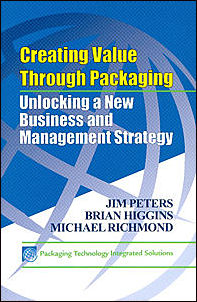Category Review: Consumer Electronics
The average U.S. household contains 25 consumer electronics products and spends $1,200 annually on them. Here's our look at some of the most interesting packaging concepts in the category.


Easy-open mouse packaging
The average U.S. household contains 25 consumer electronics products and spends $1,200 annually on them. And while price and features continue to be primary purchase drivers, green attributes will increasingly be a factor, according to the Consumer Electronics Association.
Here’s our look at some of the most interesting packaging concepts-including some green ones-that are accompanying these in-demand products and changing the way we all live, work and play.
HP rethinks packaging. HP replaced the conventional packaging of its Pavilion dv6929 notebook computer with a messenger bag made from 100 percent recycled materials, reducing 97 percent of the packaging consumers need to discard. Figuring in the master carton HP uses to ship notebooks, the waste reduction changes to a still-enviable 65 percent. The initiative came out of a Wal-Mart challenge staged for consumer electronics suppliers that asked for a reduction in the environmental impact of products and packaging. HP’s Pavilion dv6929 concept won “best in show” and is exclusive through Wal-Mart and Sam’s Club.
Premiere Packaging. The Nokia 6205 mobile phone launched a special edition earlier this year as an homage to the latest Batman movie, The Dark Knight. The themed black flip phone is embellished with a subtle movie emblem and housed in packaging featuring iconic images drawn straight from Gotham City. The promotional packaging also includes a Joker playing card inside the box with a unique code that directs movie fans to a web site where they can find out if they’ve won a $10,000 instant prize or play games to win movie-themed rewards. The phone is exclusive to Verizon Wireless.
Smaller packs, bigger benefits. AVF, a supplier of TV wall mounts, showcased a new range at this month’s Consumer Electronics Show. The flat panel TV mounts and accessories line is housed in 50 percent smaller packaging sizes, with multiple benefits. There’s the eco-advantage, which comes from the use of fewer raw materials, reduced transportation and, as a result, reduced CO2 emissions. Retailers are served by multi-facing packs and smaller sizes that maximize shelf space and reduce warehouse/transport costs. And the streamlined packaging also aids consumers by communicating the simple “do-it-yourself” nature of the product. A common brand identity links the products and accessories, helping consumers shop the line and retail employees to sell it.
Easy-open mouse packaging. With consumer research and feedback indicating a preference for secure, yet straightforward ways to open packaging, Microsoft has been working on the opening experience of its plastic packaging. The latest introductions are the brand’s Explorer Mouse and Explorer Mini Mouse packaging, which feature tear strips adhered onto two plastic end pieces that sit on the top and base of the package. A blue tab on the tear strip directs consumers to peel back the strip, which “unlocks” the two end pieces and allows consumers to remove them and access the main body of the package. (Structural design: Webb Scarlett deVlam, www.webbscarlett.com, with Microsoft structural packaging and industrial design teams; Graphics: Fitch Seattle, www.fitch.com)
Dressing up direct-to-consumer packaging. Olive Media Products retails its digital music systems in the United States exclusively through its own web site. Recognizing that every detail can enhance the brand experience, the audio company developed a shipping box to maximize that first brand encounter. Along with the brand logo, rendered in a friendly script, the phrase “Hear. Hear. Your music is here” is printed in large lettering on the outside of the box, which alternates the brand’s signature olive color with black on adjoining panels. The result is a simple, yet sophisticated, package that reflects the brand’s target audience, serious music lovers. (Brand design: Liquid Agency, www.liquidagency.com)
Graphics reinforce in-use experience. T-Mobile partnered with Google on the launch of its G1 phone, which leverages Google innovations with the goal of accelerating mass adoption of the mobile Web (apparently, most people aren’t currently accessing the Internet from their phones). A vibrant mosaic of icons and imagery are printed on the inner box so that, as users slowly remove it, they create an “animated” effect visible through a die cut of the G1 logo on the outer sleeve. The final design comes together to showcase the “possibilities” of the new user web experience. (Brand and package design: Philippe Becker Design, www.beckersf.com)
Looking for a reprint of this article?
From high-res PDFs to custom plaques, order your copy today!






